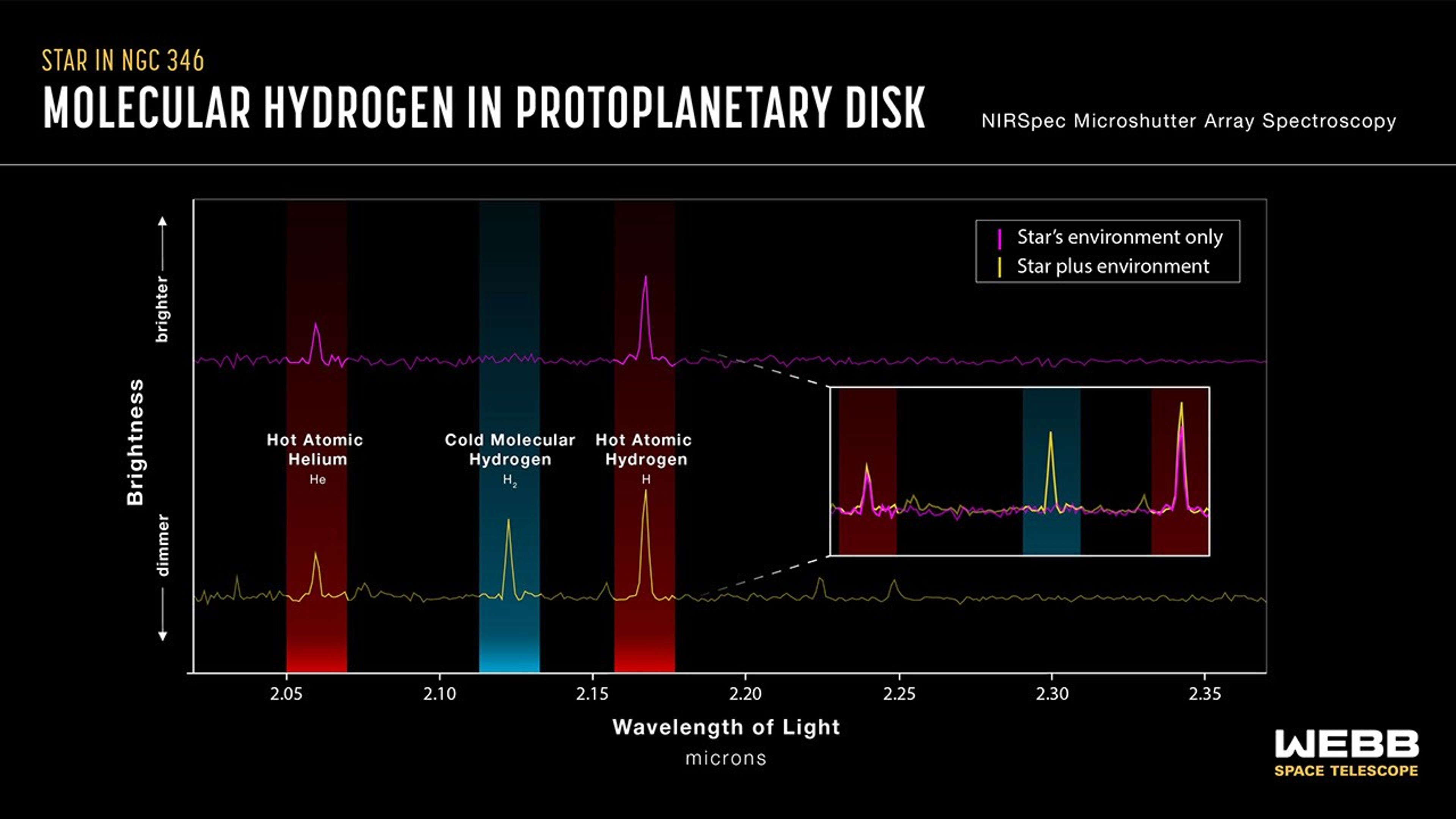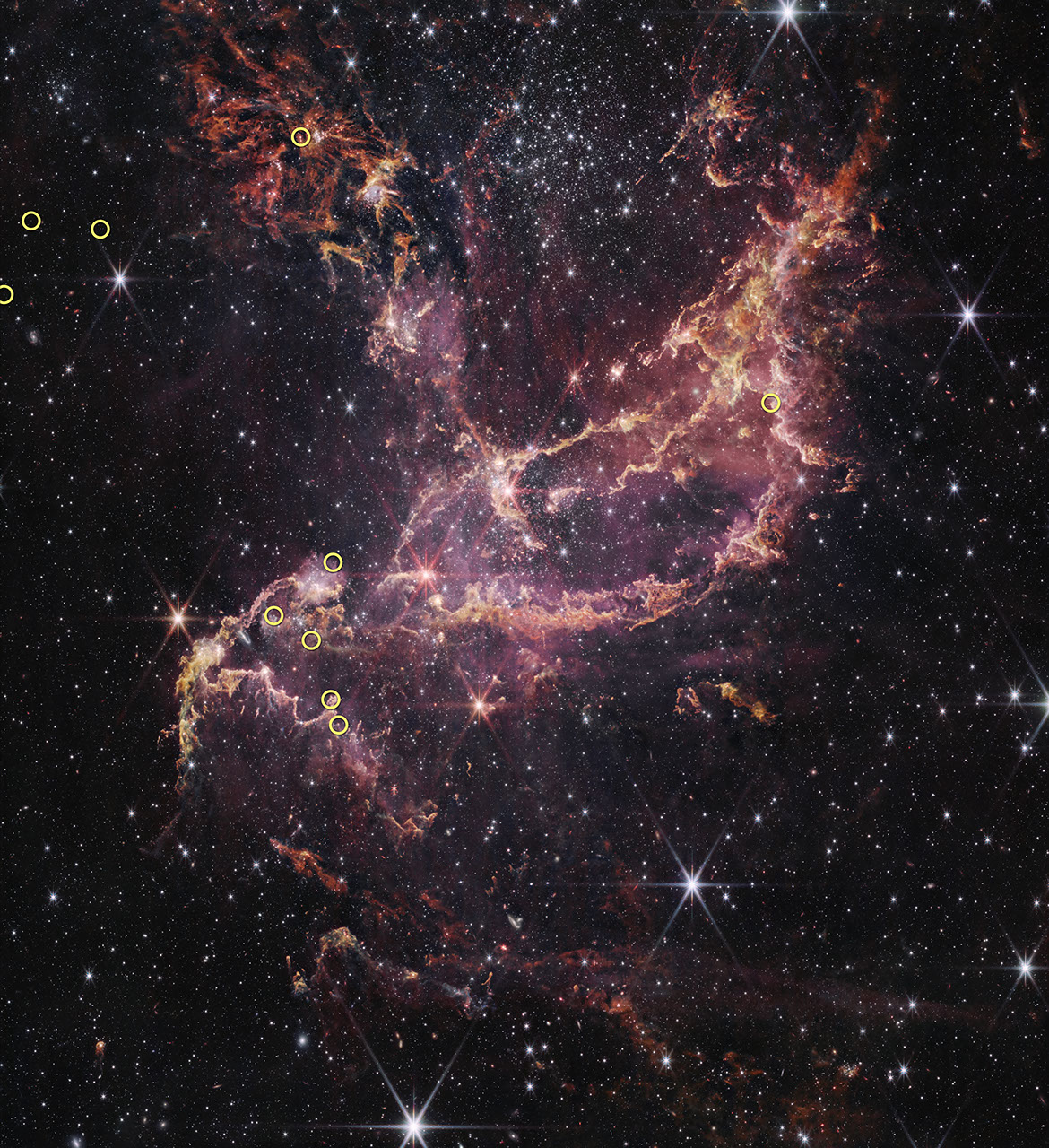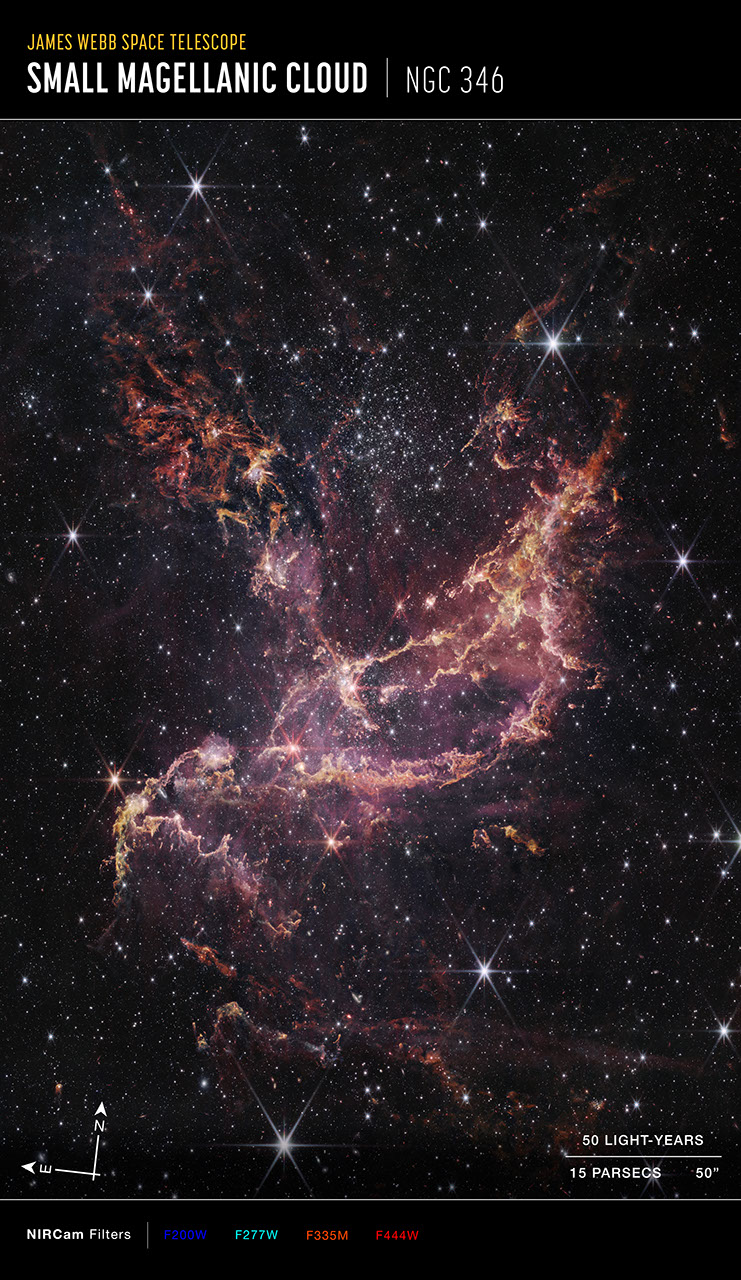1 min read
Protoplanetary Disks in NGC 346 Spectra (NIRSpec)

This graph shows, on the bottom left in yellow, a spectrum of one of the 10 target stars in this study (as well as accompanying light from the immediate background environment). Spectral fingerprints of hot atomic helium, cold molecular hydrogen, and hot atomic hydrogen are highlighted. On the top left in magenta is a spectrum slightly offset from the star that includes only light from the background environment. This second spectrum lacks a spectral line of cold molecular hydrogen.
On the right is the comparison of the top and bottom lines. This comparison shows a large peak in the cold molecular hydrogen coming from the star but not its nebular environment. Also, atomic hydrogen shows a larger peak from the star. This indicates the presence of a protoplanetary disk immediately surrounding the star. The data was taken with the microshutter array on the James Webb Space Telescope's NIRSpec (Near-Infrared Spectrometer) instrument.
- Release DateDecember 16, 2024
- Science ReleaseNASA’s Webb Finds Planet-Forming Disks Lived Longer in Early Universe
- CreditIllustration: NASA, ESA, CSA, Joseph Olmsted (STScI)
Related Images & Videos

Protoplanetary Disks in NGC 346 (NIRCam Image)
This is a James Webb Space Telescope image of NGC 346, a massive star cluster in the Small Magellanic Cloud, a dwarf galaxy that is one of the Milky Way's nearest neighbors. With its relative lack of elements heavier than hydrogen and helium, the NGC 346 cluster serves as a...

NGC 346: Hubble and Webb Observations
This side-by-side comparison shows a Hubble image of the massive star cluster NGC 346 (left) versus a Webb image of the same cluster (right). While the Hubble image shows more nebulosity, the Webb image pierces through those clouds to reveal more of the cluster's structure. NGC...

Protoplanetary Disks in NGC 346 (NIRCam Compass Image)
This image of the star cluster NGC 346, captured by Webb's Near-Infrared Camera (NIRCam), shows compass arrows, scale bar, and color key for reference. The north and east compass arrows show the orientation of the image on the sky. Note that the relationship between north and...
Share
Details
Laura Betz
NASA’s Goddard Space Flight Center
Greenbelt, Maryland
laura.e.betz@nasa.gov
NASA, ESA, CSA, Joseph Olmsted (STScI)































